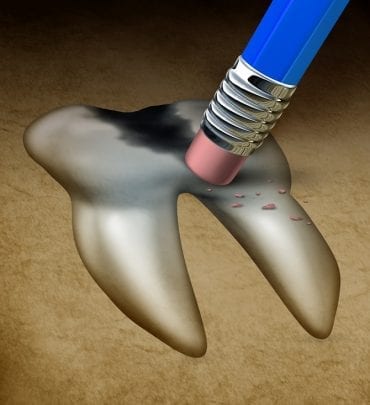Root canal therapy or endodontic therapy is a type of treatment wherein the inside of the tooth is emptied out of organic material, namely the tooth nerve, in order to remove an infection and whatnot. It’s also the procedure you can depend on when it comes to protecting your affect tooth or teeth from future pain and infections. It’s carried out in the tooth’s pulp, which is also known as the root canal (hence the name).
Page Contents
What You Need to Know About Root Canal Therapy
Root canal therapy is what you use in order to remove the nerves from the tooth pulp. Once your tooth pulp and the nerves around it get a really bad bacterial infection, you’re now at the point of no return. Here are other things you need to know about root canal therapy:
- Endodontic Therapy Costs: The technical term for root canal surgery is endodontic therapy. Its costs can vary from dentist to dentist, but it’s a less expensive choice than having your tooth removed then replaced with a bridge or implant.
- The Endodontic Therapy Name: The “endodontic” part of endodontic therapy means “inside the tooth”. That’s what you’re operating on when doing a root canal operation, after all. With that said, most laymen are more familiar with “root canal” as a shorthand for the procedure rather than the actual canal that’s part of your tooth.
- What Is a Root Canal? The root canal itself isn’t the treatment but part of the tooth that the root canal therapy is supposed to work on. It’s called a canal because it’s the hollow section of your tooth containing blood vessels, nerve tissue, and other cells known collectively as the tooth pulp.
- Composition of The Tooth: The tooth is composed of roots and the crown. The crown is mainly the part of the tooth above the gumline. Meanwhile, the tooth root is what’s below it, attached to the jawbone itself. The root canal is located inside this tooth, between the crown and the root.
- The Tooth Pulp and Its Function: Inside the root canal is the pulp. This pulp is responsible for nourishing the living tooth, providing the surrounding area with moisture and nutrients. The pulp’s nerves also have the function of sensing pain and hot or cold temperatures for good measure.
- The Painfulness of the Treatment: Root canal therapy has gotten a bad rap when it comes to its alleged painfulness. This comes from the earliest versions of the procedure. It, after all, involves nerve removal. Without modern advancements in dentistry, the impact of removing nerves should be readily obvious.
What Are The Steps Involved with Root Canal Therapy?

Endodontic therapy is done using the following steps. It also takes from 1 to 3 sessions in order to complete. How many sessions are required depends on the patient and the severity of the tooth infection. Indeed, you can end up with two additional appointments in order to take care of a complicated operation involving curved canals, multi-canals, or large infections.
Root Canal Cleanup: Actually, before you’re asked to clean the root canal up, you will first be asked to take antibiotics for a week to bring the swelling down from your throbbing, infected root and affected gums. Afterwards, the operation can take place, involving the dentist taking out everything organic from within the root canal.
You will be put under local anesthesia or even general anesthesia if this is sedation therapy as the doctor drills a small access hole unto the tooth enamel and removes the diseased pulp with small files. This is while root canal therapy is used when the infection has reached the root; once that goes black you can never go back.
Filling in The Root Canal: Once cleanup is done, the dental professional then shapes and decontaminates the empty area with his irrigation solution and tiny dental files. From there, the tooth is filled with inert, rubbery material using adhesive cement to seal the canals completely when all is said and done. This reinforces the remnants of the tooth.
After pulp removal, the tooth is effectively dead. You will no longer feel pain from your dead tooth because the nerves have been removed and all you have is the shell of your formerly living tooth. All the nerve tissues have been removed in order to eliminate the infection before it really gets to spread all over your mouth. This is why dental infections should be prevented.
The Addition of Filling or a Crown: Now that the tooth has been killed, its hard shell or enamel won’t be getting nutrients now. It’s currently more fragile than ever before. A tooth that lacks pulp won’t get nutrients to keep it healthy care of the ligament attaching its root to the jawbone. It’s already hard enough by itself, like an abandoned seashell.
However, as time passes by, the tooth will become more brittle. You need filling and/or a crown over it to protect it from breaking apart into pieces. Until your crown has been completed, you shouldn’t chew or bite hard on the affected tooth. You will be given a temporary crown first while the dental laboratory works on your dental prosthetics that will replace the temp once it’s completed.
Treatment takes one appointment more often than not. Putting in a crown requires a separate appointment but sometimes you can avail of the crown as well in some dental clinics with 3D printer/miller or nearby dental labs. These are same-day operations for both the crown and the endodontic therapy.
How Painful Is Root Canal Therapy?

Most patients are concerned about how painful this type of treatment is. It’s in fact one of their greatest fears, exacerbated by horror stories they’ve heard from their parents, grandparents, and so forth. However, at present, the tech for endodontic therapy has advanced by leaps and bounds. Furthermore, trained dental surgeons carry it out in order to make the process painless from start to finish.
- The Origin of Pain: Let’s debunk the most obvious myth. The pain comes not from the root canal therapy but from the infected pulp within the root canal itself. The treatment doesn’t cause the pain. After it removes the affected nerves, it should help in the pain’s alleviation or outright removal. It’s a solution to pain.
- Anesthesia Exists: The procedure is painless because anesthesia exists. The dentist will relieve the pain of the endodontic procedure through numbing the tooth and its surrounding area with local anesthesia. You won’t feel a thing thanks to this numbing chemical. The root canal therapy itself won’t take too long unless the dentist is dealing with large infections or complicated canals.
- Dealing with Post-Operative Pain: Once the treatment is over, you will naturally expect tenderness. This is also what most patients are concerned about when undergoing this treatment. However, you can take some over-the-counter or OTC pain medication to deal with this mostly temporary pain. You might even be given prescription drugs like codeine to better deal with the ache.
- Prevention Is Better Than The Cure: You might be prescribed antibiotics to treat or prevent infection after the operation is over. You can also be asked to take antibiotics to bring down the swelling before the operation can take place. With that said, it’s always better to take care of your teeth and gums so you won’t end up resorting to an endodontic treatment in the first place.
Who Are The Candidates for Root Canal Therapy?
Endodontic therapy is a treatment for injured or infected tooth pulp. The operation helps repair or save a tooth until the absolute last resort of extraction is needed. This is what the dentist recommends in order for you to save your permanent teeth even as it remains at the end of its rope. Otherwise, your options are extraction or putting in a dental implant on the now empty tooth socket.
- The Point of No Return: Fillings or crowns can help prevent a tooth from getting an infected pulp. However, once the pulp itself is diseased or injured, it cannot repair itself because the nerve is now involved. The tissue simply dies when push comes to shove. Once the nerve is damaged, you can’t really fix it and it’s better to simply save the shell of the tooth than attempted to fix the nerve injury.
- How Does The Pulp Get Infected? The pulp ends up with an infected due to dental caries or enamel damage. If you have a loose filling, a cracked tooth, and/or a deep cavity, then bacteria can enter the pulp of your tooth and cause an infection that destroys it from within. This is why you should take care of your teeth and have them filled up whenever dental cavities are identified post-haste.
- How The Infection Spreads and Loosens Teeth: The pulp will eventually die due to the bacterial infection. Once the infection penetrates through the root openings, it can spread to the bone itself. This will then result in the weakening of the bone to the point of breaking it down. The tooth ligaments will then swell, resulting in the loosening of the tooth.
- The Complications of Pulp Injuries: Once you get a pulp injury, your teeth will become sensitive to high and low temperatures. You might even feel pain as you chew your food. Some people might have to endure throbbing pain that persists, resulting in them seeking dental assistance to find relief from all their tooth-related suffering.
- Treat The Infection ASAP: The infection will spread if not treated immediately. You should at least be prescribed antibiotics to keep the swelling down and to isolate the infection around the tooth pulp so that things won’t go from bad to worse. Eventually, the tooth will loosen and require extraction. Aside from removal of the tooth, you have the option to remove the pulp itself.
- Extraction Is a Looming Option: Some patients choose extracting the diseased tooth over root canal therapy since it is cheaper, especially if the tooth is a molar at the back of their mouth and it hurts quite a lot. A tooth that can’t be restored or saved with filling should be extracted. If the tooth has suffered from bone loss due to gum or periodontal disease you can’t even do an endodontic therapy for, in fact.
- The Downsides of Extraction: Most patients didn’t know this, but did you know that when you remove one or more permanent teeth from your mouth, the surrounding teeth would start to move and shift towards that empty area, resulting in a more crooked or unsightly appearance? Your smile will be affected by your tooth removal even if you’ve removed a molar or back tooth. It also affects the integrity of your bite.
- Save Your Tooth from Pain and Removal: One of the ways you can save your infected tooth from removal and pain is by undergoing endodontic therapy. Literally save what’s left of the shell of your tooth by undergoing this procedure. Otherwise, you’ll have to invest in an even more expensive option, which is implant dentistry. Saving your natural tooth is always the best option. This is why preventing cavities from progressing is the key to avoiding tooth loss or expensive operations.
In Conclusion

Even in the 21st Century, the prospect of getting a root canal or root canal surgery remains a knee-quaking proposition. Even with the advancements of endodontic procedures, it still remains painful to both your budget and your mouth. Physical and monetary pains are present at the mere mention of a root canal. However, how many people even know what a root canal is and why it needs to be operated upon when your tooth starts to smart?
It’s also important to remember that this procedure is not as painful as you might think. It’s thought to be quite the painful operation but it’s ironically a pain-relieving treatment. Root canal therapy from the 20th Century shouldn’t be compared to endodontic treatments of the 21st Century that goes out of its way to make the operation as painless as possible. At any rate, it’s best to avoid root canal treatments altogether by preventing tooth decay and learning how to brush, floss, and clean your teeth correctly with mouthwash.
Thantakit International Dental Center is Thailand’s longest established dental center. Situated in Bangkok, our clinic is renowned across the world as a destination for world-class dentistry, with most of our patients flying to us from Australia.
Please contact us today and get a FREE dental consultation.












